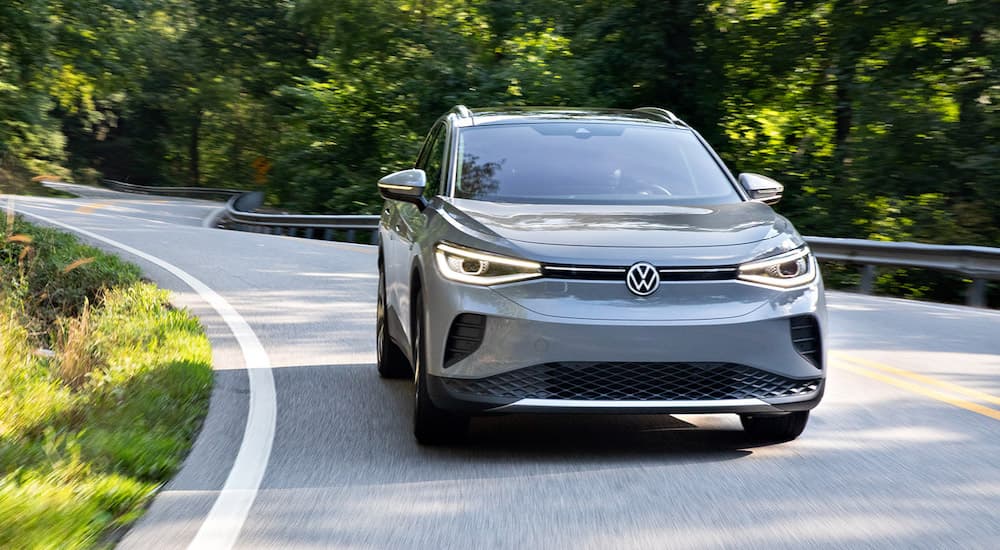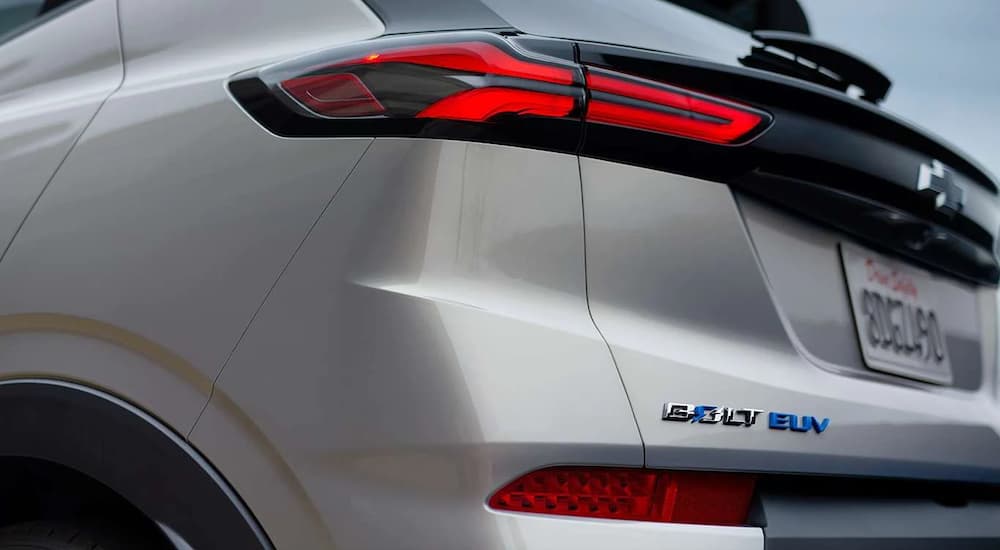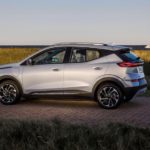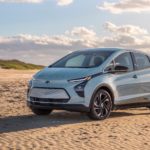Electric vehicles have been shrouded in mystery for years, primarily because of their mile-high price tags, making them exclusive to only those with deep pockets. Fortunately, the tides are changing as we see with new cheaper models and new rivalries like the 2022 Volkswagen ID.4 Electric Vehicle vs 2022 Chevy Bolt EUV. These models do something remarkable for American drivers looking to build a greener future: they make EVs more accessible with affordable price tags.
The Volkswagen ID.4 Electric Vehicle (EV) starts at $37,495, and the Chevy Bolt EUV begins at $33,500 for 2022. These prices don’t include the potential Federal tax credit or the hundreds of dollars you’ll save on fuel each year. But how do Volkswagen and Chevrolet make their EVs so affordable, adding incredible value with a host of standard features and exceptional power that don’t come at a premium? The answer lies in the platform.
The Volkswagen MEB Architecture vs the Chevrolet Ultium Platform
The high price tags that defined EVs for years aren’t just a problem for consumers; it’s also a problem for automakers because EVs are expensive to manufacture, and automakers have to make up for those costs elsewhere. Volkswagen and Chevrolet go to the heart of this problem, resolving the issue with their all-electric platforms that minimize overhead and expand their lineups without rising costs. For Volkswagen, the answer is its modular electric drive matrix or MEB Platform. For Chevrolet, the answer is General Motors’ Ultium Platform.
The MEB electric vehicle architecture is designed specifically for Volkswagen models. Yes, models as in plural or more than one. What does this mean? The MEB Platform is designed to accommodate different vehicles, meaning both cars and SUVs across the Volkswagen lineup. It’s a multi-use platform that’s cost-effective, allowing Volkswagen to pass those savings onto customers with affordably priced models like the ID.4 EV.
The same can be said for the Chevrolet Bolt EUV’s Ultium Platform, which General Motors designed as a multi-purpose platform that could work across its many brands. Ultium’s modular design and flexible battery architecture mean it can accommodate cars, trucks, and SUVs from Chevrolet and GMC to Cadillac and Buick. This flexibility reduces production costs, translating to more savings for drivers, similar to what we see with the Volkswagen ID.4 EV and the MEB Platform.
In addition to their cost-effectiveness, both platforms are relatively simple by design and are built around the battery. As a result, Volkswagen and Chevrolet can offer drivers different driving ranges to answer the broad spectrum of driving needs amid each brand’s customer base. However, the MEB Platform differentiates itself beyond this by relying on a single electric motor to drive the rear axle and by improving the weight distribution across the vehicle for outstanding driving dynamics. Because of this, models like the ID.4 EV offer the characteristic handling and responsiveness drivers have come to expect from the Volkswagen lineup.
Another distinguishing feature is the MEB Platform’s industry-wide honors. Volkswagen earned the 22nd Porsche Prize from the Vienna University of Technology for the MEB Platform’s success in ushering the industry into a new era of mobility. The internationally renowned award has been a coveted title since 1977, celebrating pioneering advancements throughout the industry and, therefore, putting the MEB Platform in the company of revolutionary innovations like the airbag and anti lock braking system.
Going by the Numbers
Understanding the significant differences between the MEB Platform and the Ultium Platform requires looking beyond their functionality and versatility to how they perform in models like the Volkswagen ID.4 EV and the Chevrolet Bolt EUV. How do the flexible platforms deliver the power and capability needed without sacrificing efficiency or responsiveness? How does Volkswagen accomplish this more so than Chevrolet? It’s time to find out.
Power
The 2022 Chevrolet Bolt EUV, built on the Ultium Platform, doesn’t take advantage of the platform’s flexibility and gives drivers only one powerplant. The all-electric SUV comes standard with an electric motor powered by a 65-kWh lithium-ion battery pack and front-wheel drive. The combination delivers 200 horsepower and 266 lb-ft of near-instant torque. So, how does this compare to the Volkswagen ID.4 EV? Volkswagen knows the power of choice.
The ID.4 EV comes standard with an 82 kWh battery pack and rear-wheel drive, a combination that produces 201 horsepower and 229 lb-ft of torque. The MEB Platform allows Volkswagen to offer the ID.4 EV with all-wheel drive, an advantage over the Bolt EUV. As a result, the all-wheel drive ID.4 EV sees a healthy increase in power and exceptional performance, delivering 295 horsepower and 339 lb-ft of instantaneous torque.
Range
Volkswagen takes better advantage of the flexibility of the MEB Platform than Chevrolet does with its Ultium Platform. The choice between rear-wheel and all-wheel drive gives drivers plenty of opportunities to find the perfect ID.4 EV for their driving needs, with the SUV’s range averaging from 245 miles to 280 miles depending on the electric powertrain and configuration. In contrast, you won’t find any flexibility with the Bolt EUV since its single-engine lineup only offers a 247-mile range in front-wheel drive.
Performance
Electric vehicles are renowned for their ability to deliver instantaneous power, another similarity between the ID.4 EV and Bolt EUV. However, as mentioned, Volkswagen pushes the ID.4 EV to the next level with the available all-wheel drive option that Chevrolet does not offer. More importantly, how Volkswagen executes all-wheel drive on the ID.4 EV is truly remarkable as it effortlessly blends capability and efficiency.
The ID.4 EV features a permanent magnet synchronous motor that boosts its efficiency and handling. When you opt for the ID.4 EV with all-wheel drive, Volkswagen adds an asynchronous electric motor to the front axle that delivers 107 horsepower and 119 lb-ft of torque. This additional power gives the ID.4 EV a total production of 295 horses, 339 lb-ft of torque, and a launch from 0 to 60 mph in 5.4 seconds.
This power doesn’t come at the cost of the ID.4 EV’s driving range because, unlike conventional mechanical set-ups, the rear motor oversees traditional driving situations and only engages the front motor when it senses wheelspin. Moreover, since the motors can react faster than any internal combustion engine, the ID.4 EV’s response is instantaneous as it constantly maximizes traction and handling before the driver notices. You won’t find anything comparable on the Chevrolet Bolt EUV and its limited front-wheel drive configuration.
It’s the People’s Car Company for a Reason
Volkswagen translates to “the people’s car company,” a fitting name considering the award-winning MEB Platform and its success at ushering drivers into an all-electric future. Volkswagen and Chevrolet answer a significant issue in the EV segment––the high price of building, buying, and maintaining electric vehicles. The MEB and Ultium Platforms are modular and flexible, allowing the automakers to use the platforms across their lineups and pass more savings to the customer so that adopting an all-electric lifestyle is more affordable and accessible to the masses.
While the approaches are similar, Volkswagen and the ID.4 Electric Vehicle take the lead against Chevrolet and the Bolt EUV for making better use of its platform. We see this firsthand as Volkswagen gives drivers a choice between rear-wheel and all-wheel drive, simultaneously offering a broad spectrum of power and range. The Bolt EUV’s single motor fails to consider a driver’s unique needs, giving the Volkswagen ID.4 Electric Vehicle more room to shine.






